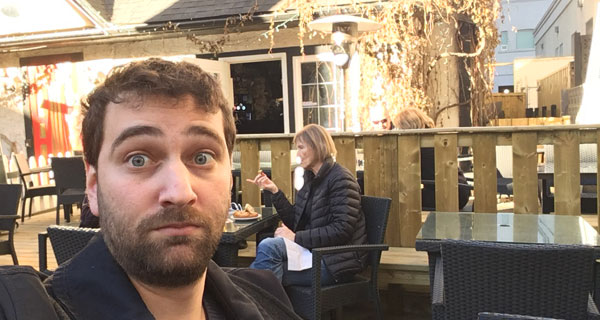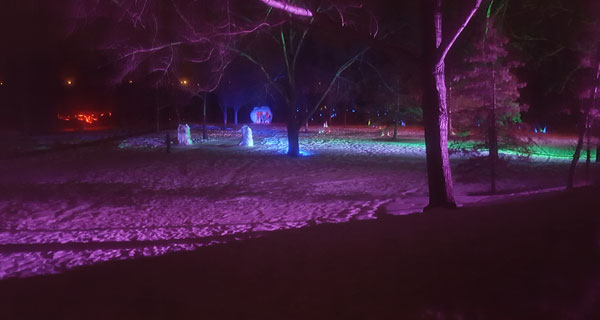01 Mar Turning Over a New Snowflake: A Recap of the Winter Cities Shake-Up Conference
Let’s get two things straight. One, I am almost always cold. I spend all of April, most of May, and a big chunk of June wondering how people so easily abandon their winter attire. I cower at home huddled in woolen blankets whenever temperatures drop below 15 degrees, envying people whose bodies produce heat. I’m convinced I’m the world’s first cold-blooded Homosapien.

The second thing we need to get straight is that I hate being cold. I despise it. I loathe it. The Grinch hates Christmas, Garfield hates Mondays, I hate the cold.
The second thing we need to get straight is that I hate being cold. I despise it. I loathe it. The Grinch hates Christmas, Garfield hates Mondays, I hate the cold.
It should come as no surprise then, that when my colleague Ryan and I travelled to Edmonton for the 2nd Winter Cities Shake-Up Conference, I boarded the plane with a healthy dose of scepticism. Hosted by the City of Edmonton, the conference is a gathering of international urban planners, entrepreneurs, artists, and community organizers aiming to share best practices on utilizing winter’s unique opportunities to build thriving businesses, more dynamic public life and design, increase wellness, and foster true winter culture. As the cold and I are not on speaking terms, I landed expecting the worst. The unseasonably warm temperatures greeting us upon our arrival seemed to bolster my case. “Look at all the people enjoying the warm weather”, I told Ryan. “Everyone is so happy to have a reprieve from winter. People talk a good game, but deep down, they hate the cold just as much as I do.” I could see Garfield and the Grinch nodding along with me. Ryan responded by pointing out that the cartoon visions were not in fact real, that I did not have the backing of my imaginary friends, and that the conference just might change my mind. Turns out he was right on all three counts.

Not what I expected Edmonton in winter to look like
The conference approached winter from several different perspectives. Talks came not only from the usual suspects: urban designers, active transportation planners, and politicians, but from lighting designers, First Nations elders, psychology professors, occupational therapists, and cross-culture communication experts. I usually think of winter as something to be slogged through. It was eye-opening to get a much wider perspective on all the unseen ways winter influences us, and how tweaking the design of our buildings and public spaces, and shifting our winter maintenance priorities to support active transportation can lead to healthier, more socially integrated, more environmentally friendly cities.
Kari Leibowitz, a PhD candidate in Social Psychology, spoke first, discussing her research on wintertime mindsets. She spoke to her experience studying in Tromso, Norway, a city 350km north of the Arctic Circle. They experience a two-month winter period where the sun does not rise…EVER. And yet, she found that most people in Tromso flourish in winter. Her research points to benefits we can derive by individually and collectively shifting our winter mindsets and encouraging cosiness or koselig as they say in Norway. When we as individuals start thinking of winter as a season that offers just as much to enjoy as summer, we start experiencing winter rather than enduring it. If cities start treating winter as a season that can be designed for and programmed just as much as summer, they start becoming places people love to be twelve months of the year, rather than six.

Dynamic lighting is key to creating a truly magical winter vibe.
As the conference progressed, the evidence piled up. What’s one of the easiest ways to allow recent immigrants to feel connected and welcome? Make winter programming and recreation accessible and affordable. How can we make cities more environmentally sustainable, reduce congestion, and dignify our most vulnerable residents? Prioritize snow-plowing of sidewalks and cycling lanes. Want to bring more beauty to our darkest days? Use creative lighting to enhance cities’ natural and man-made wonders. Many of the same points being made here had been made by 8 80 Cities in our Wintermission report.
The more I listened, the more committed I became to turning over a new leaf, or a new snowflake as the case may be. I promised myself I would start shifting my winter mindset. I will learn to love winter, never mind the Grinch and Garfield. Granted, the cold and I haven’t spoken since Grade 2, when I forgot my winter coat at school and walked home in a blizzard. But I know I can thaw that relationship. I’ve learned that winter has its own magical rewards. I intend to discover them.



